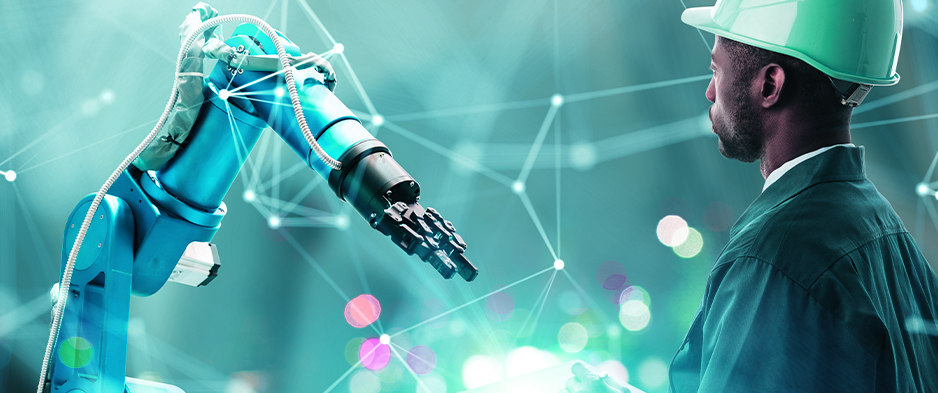Robotics in the supply chain is a key contributor. Thanks to autonomous and collaborative robots, companies have access to new opportunities in terms of long-term cost reduction, productivity, stability of use and labor, reduction of the error rate, optimization of picking times, sorting and storage, and much more.
Robotics of the future, today
The first industrial robot dates back to 1937, a rudimentary five-degree-of-freedom manipulator driven by an electric motor. But the industrial robots that we know today came only 30 years later, with the third industrial revolution and the creation of the first programmable controls.
We’ve come a long way since then. Over the decades, robots have grown in size, performance, precision and functionality, becoming collaborative or even autonomous. These cobots play a role of primary importance in Industry 4.0. The technical evolution of robotics has gone beyond its main function of replacing humans in all the most dangerous, tiring and repetitive activities. Today, the purpose of robots is to work with the operator in a collaborative relationship.
Robots are equipped with sensors and controls for the safe management of their movements and any contacts with the operator – intentional or accidental – in compliance with the protection of the latter. Thus, through the data collected with machine learning and their processing through artificial intelligence, and thanks to advanced sensors, robots are acquiring autonomous behaviors, with the ability to understand the context and act accordingly.
From static, robots have become mobile and autonomous. That is why we talk about cognitive robotics, a phenomenon that has already begun in the industrial sector and will continue to grow in the future, with a huge impact on the supply chain.
Autonomous mobile robots in the supply chain
Today, the intervention of an expert technician is no longer necessary for industrial robots programming and installation. The end user can manage and program them on their own. Once placed in a workstation, with a few guided instructions and an increasingly rich and expandable library of features, even a non-expert operator is able to make them operational.
Warehouses are becoming more and more automated, and autonomous mobile robotics is becoming more common every day. As such, robots are real collaborators, not a substitute for humans, helping workers to be more productive and fulfill orders quickly and efficiently. Both in large companies and in smaller ones.

